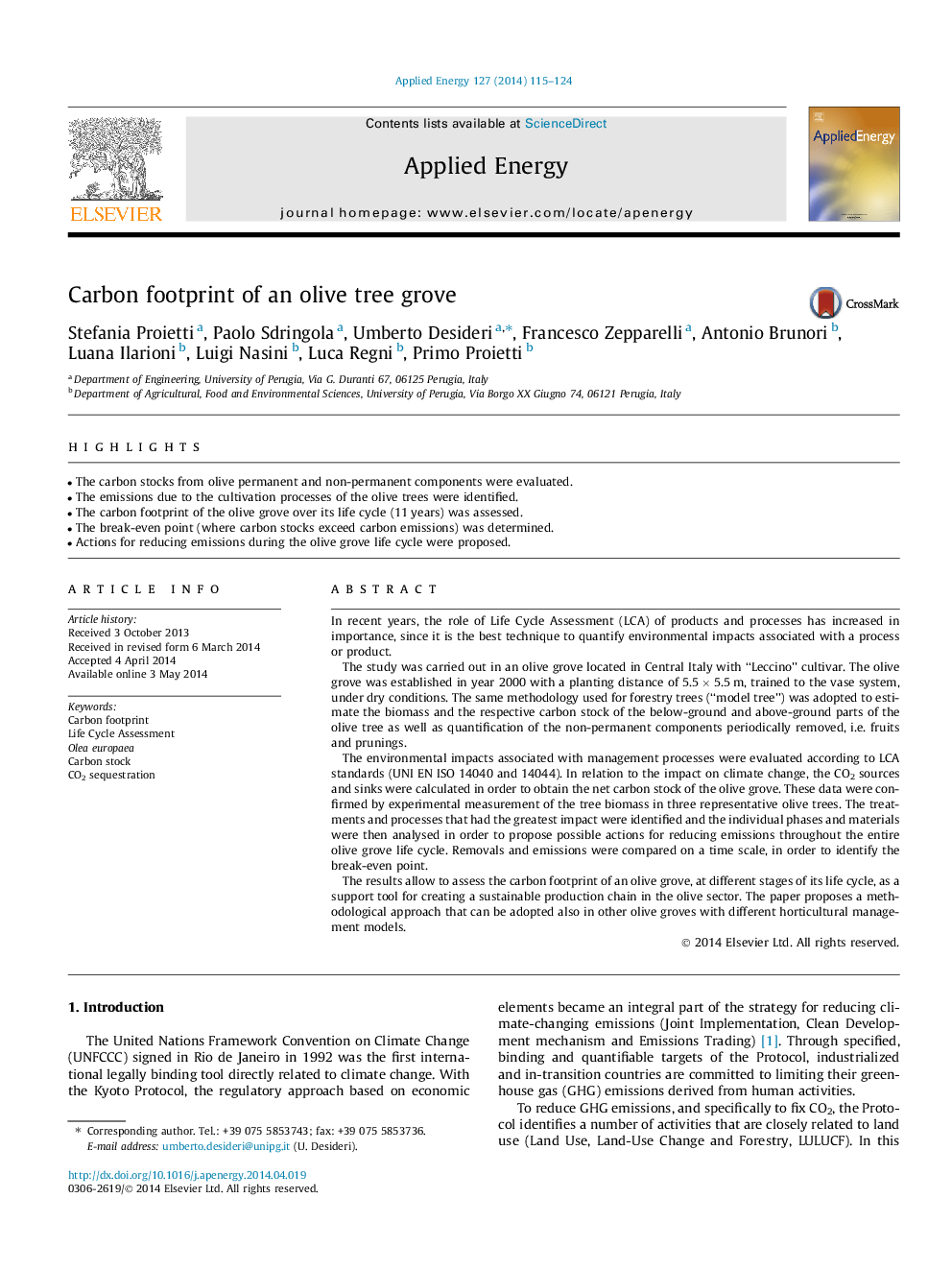| کد مقاله | کد نشریه | سال انتشار | مقاله انگلیسی | نسخه تمام متن |
|---|---|---|---|---|
| 242744 | 501898 | 2014 | 10 صفحه PDF | دانلود رایگان |
• The carbon stocks from olive permanent and non-permanent components were evaluated.
• The emissions due to the cultivation processes of the olive trees were identified.
• The carbon footprint of the olive grove over its life cycle (11 years) was assessed.
• The break-even point (where carbon stocks exceed carbon emissions) was determined.
• Actions for reducing emissions during the olive grove life cycle were proposed.
In recent years, the role of Life Cycle Assessment (LCA) of products and processes has increased in importance, since it is the best technique to quantify environmental impacts associated with a process or product.The study was carried out in an olive grove located in Central Italy with “Leccino” cultivar. The olive grove was established in year 2000 with a planting distance of 5.5 × 5.5 m, trained to the vase system, under dry conditions. The same methodology used for forestry trees (“model tree”) was adopted to estimate the biomass and the respective carbon stock of the below-ground and above-ground parts of the olive tree as well as quantification of the non-permanent components periodically removed, i.e. fruits and prunings.The environmental impacts associated with management processes were evaluated according to LCA standards (UNI EN ISO 14040 and 14044). In relation to the impact on climate change, the CO2 sources and sinks were calculated in order to obtain the net carbon stock of the olive grove. These data were confirmed by experimental measurement of the tree biomass in three representative olive trees. The treatments and processes that had the greatest impact were identified and the individual phases and materials were then analysed in order to propose possible actions for reducing emissions throughout the entire olive grove life cycle. Removals and emissions were compared on a time scale, in order to identify the break-even point.The results allow to assess the carbon footprint of an olive grove, at different stages of its life cycle, as a support tool for creating a sustainable production chain in the olive sector. The paper proposes a methodological approach that can be adopted also in other olive groves with different horticultural management models.
Journal: Applied Energy - Volume 127, 15 August 2014, Pages 115–124
